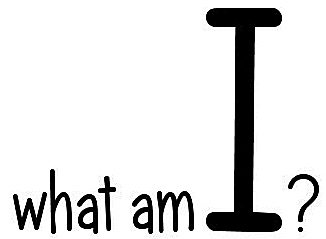“Who am I?” or, “What am I” make excellent ESL icebreaker activities. Try them out in your TEFL classes today.

What am I?/Who am I? Activities and Games
Are you looking for a quick ESL icebreaker or warm-up activity to try out with your students today? Then keep on reading to find out more about “What am I?” It’s fun, and engaging and works well for a variety of class sizes, and levels and for kids, teenagers as well as adults. Find out more about this who am I activity for TEFL.
What am I/Who am I Game
Skills: Speaking/listening/reading
Age: 10+
Materials Required: Tape or pins and vocabulary words on paper
What am I? is a classic party game that is an excellent way for beginner students to practise asking simple questions. I often use it as an ESL speaking warm-up in the next class if in the previous one, we studied question forms.
A Variation for More Advanced Students
For more advanced students, you can choose much harder vocabulary words instead of simple ones like you would for beginners. A good topic for advanced students (or a party you are hosting) is famous people.
Who Am I: How it Works
Write a bunch of animals, jobs, hobbies or whatever vocabulary you want on slips of paper. Then tape or pin one to each student’s back so that they can’t see what it is. They have to go around to their classmates asking yes/no questions to find out what they are.
Consider Playing “Who Am I?” Too
Another option is to play this as a “Who am I?” activity and give students people instead of something like animals. This works better for adults instead of children as kids may not know enough famous people to participate fully.
A Quick Example with Animals
For example, “Do I have four legs?” After each question, they can make a guess and the other student will answer “yes” or “no.” They can only ask each student one question, so they will talk to almost everyone in the class by the end of the activity.
Teaching Tips For What Am I/Who am I
Be sure to pick vocabulary that you are sure everyone is familiar with. This game really isn’t fun for the student who is unlucky enough to get “armadillo.”
If you are playing Who am I? then be sure to pick people that students in the country you’re teaching in will know. For example, Korean students are often unfamiliar with European or North American political leaders.
Also, emphasize to students that this game is just for fun and the purpose is to enjoy themselves while practicing some questions in English. While they can just look at their own paper or get someone to tell them the word, it’s not useful and it won’t feel good to figure out the word through cheating.

What am I?
Procedure For this What Am I Game:
1. The teacher prepares slips of paper with the target vocabulary.
2. The teacher pins or tapes one slip to each student’s back.
3. Students walk around the class asking one classmate one yes/no question. The classmate answers the question and after each question, they can have one guess as to what the secret thing is.
4. If incorrect, they talk to another classmate and follow the same procedure. If correct, they take a rest, or get another paper from the teacher depending on time. A student can only ask one question to each student in the class—they cannot speak to the same student twice.
Want more ESL Speaking Warm-Up Awesome in your Life?
Did you like this quick ESL warmer? Yes? Thought so. Then you’re going to love this book that you can find over on Amazon: 39 ESL Warm-Ups for Teenagers and Adults. It has dozens of top-quality English warm-ups that you can use in your class today.
Why Use ESL Warmers?
The key to better classes is to start off with a warmer activity. It’s a fact that many of your students will not have spoken a single word of English since leaving your classroom in the previous class.
Help ease your students back into it by starting with a quick warm-up. That way, they’ll be ready to learn when you jump into the heart of the lesson.
Warm-ups are also ideal for a quick review of material from the previous class. Either way, I never start my classes off without one!
Available in a Variety of Formats
The book is available in both digital and print formats. Keep a copy on the bookshelf in your office as a handy reference guide. Or, take the digital copy with you to your favourite coffee shop for lesson planning on the go.
Shop Now
Yes, it really is that easy to plan interesting, engaging English lessons for your students. Check out the book for yourself over on Amazon today:
FAQs
There are a number of common questions about the Who Am I, or What am I games. Here are the answers to some of the most popular ones.
Why is the “Who Am I?” activity useful for ESL learners?
This activity enhances vocabulary, descriptive language skills, critical thinking, and encourages active participation in English conversations.
What are the benefits of using the “Who Am I?” activity in ESL classes?
It improves students’ ability to provide and understand descriptive clues, hones listening skills, and promotes creative thinking.
Can the “What Am I?” activity be adapted for different proficiency levels?
Yes, the complexity of clues and questions can be adjusted to match the language skills of the students.
How can the “Who Am I?” activity be used for practicing specific language structures?
Teachers can provide rules, such as requiring students to use specific grammar points or vocabulary words in their descriptions.
How can the “Who Am I?” activity contribute to cultural understanding in ESL classes?
Students can choose to describe people, places, or things from different cultures, promoting cross-cultural awareness and learning.
Can technology be integrated into the “What Am I?” activity?
Yes, students can use online tools to generate random words for descriptions or engage in virtual versions of the game.
How do you ensure inclusivity and sensitivity in the “Who Am I?” activity?
Teachers should guide students to choose appropriate and respectful subjects for the activity, avoiding sensitive topics.
What’s the role of peer feedback in the “What Am I?” activity?
Peer feedback helps students refine their description skills, and it encourages active listening and constructive communication.
Is the “Who Am I?” activity suitable for large and small ESL classes?
Yes, it works well in both settings, with larger classes benefiting from more diverse guesses and smaller groups allowing for in-depth discussion.
Have your say about this Game: Who Am I?
Do you have a go-to warm-up activity that you like to use in your classes? Have you played Who Am I? or, What am I with your students?
Leave a comment below and please let us know! Or, let us know what you think about this ESL speaking warm-up. We’d love to hear from you.
Also be sure to give this article a share on Facebook, Pinterest, or Twitter. It’ll help other busy teachers, like yourself find this useful resource for English lesson planning.

Who am I activity
Last update on 2025-06-05 / Affiliate links / Images from Amazon Product Advertising API





Leave a Reply